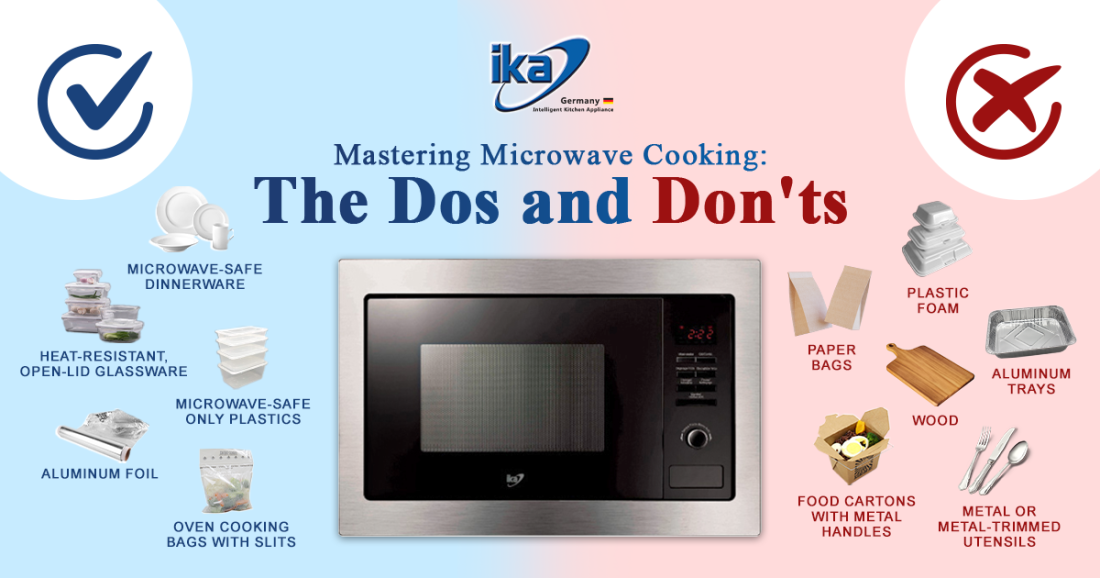Mastering Microwave Cooking: The Dos and Don’ts
Microwave ovens have become indispensable in our kitchens, offering convenience and speed when it comes to cooking and reheating food. To make the most of this versatile appliance while ensuring safety and optimal results, it’s important to be aware of the dos and don’ts of microwave cooking. In this blog post, we will explore essential tips and guidelines to help you master the art of cooking with a microwave.
Do Use Microwave-Safe Containers
When selecting containers for microwave cooking, it’s crucial to use microwave-safe options. Look for containers labeled as microwave-safe or those specifically designed for microwave use. Avoid using containers made of metal, as they can cause sparks or damage the oven. Opt for microwave-safe glass, ceramic, or microwave-safe plastic containers.
Do Cover Food for Even Heating
To promote even heating and prevent food from drying out, cover your food with a microwave-safe lid, microwave-safe plastic wrap, or microwave-safe paper towel. Covering helps to trap steam, keeping the food moist and evenly heated. Be sure to leave a vent or opening to release excess steam and prevent pressure buildup.
Do Stir and Rotate Food
To ensure even cooking, stir and rotate your food during the microwaving process. Microwaves may have hotspots, and stirring or rotating helps distribute heat more evenly. This technique is particularly important when heating liquids to prevent sudden boiling or splattering.
Do Use Microwave-Safe Utensils
When stirring or serving food, use utensils that are safe for microwave use. Opt for microwave-safe materials like glass, ceramic, or microwave-safe plastic. Avoid using metal utensils, as they can cause sparks and damage the oven.
Do Follow Defrosting Guidelines
When defrosting food in the microwave, follow the recommended guidelines provided with your microwave or in the food packaging. Use the defrost function or lower power settings to ensure gradual and safe defrosting. Rotate or turn the food periodically to promote even thawing.
Don’t Use Plastic Containers Not Labeled as Microwave-Safe
It’s important to note that not all plastic containers are suitable for microwave use. Containers that are not labeled as microwave-safe may leach harmful chemicals into your food when exposed to heat. To avoid potential health risks, stick to containers specifically designed for microwave cooking or choose microwave-safe glass or ceramic alternatives.
Don’t Use Sealed Containers
Avoid microwaving tightly sealed containers, such as closed jars or containers with airtight lids. Sealed containers can create pressure, leading to potential explosions and causing harm. Before microwaving any closed container, make sure to remove or loosen the lid to allow steam to escape.
Don’t Overcook Food
Overcooking can result in dry and less flavorful food. Follow the recommended cooking times in recipes or on food packaging, and check for doneness before continuing to cook. It’s better to slightly undercook food and let residual heat finish the process than to overcook it.
Don’t Microwave Certain Foods
Some foods are not suitable for microwave cooking. Avoid microwaving eggs in their shells, as they can explode. Similarly, avoid microwaving grapes or raisins, as they can spark and cause a fire hazard. When in doubt about the microwave suitability of a specific food, consult a reliable source or follow the package instructions.
Don’t Neglect Cleaning and Maintenance
Regularly clean your microwave to remove food splatters and spills. Wipe the interior with a mild detergent or microwave-safe cleaner. Pay attention to the turntable, door seals, and control panel. Additionally, refer to the manufacturer’s instructions for maintenance recommendations and safety precautions.
By following these dos and don’ts, you can make the most of your microwave cooking experience while ensuring safety and achieving delicious results. Embrace the convenience and versatility of microwave cooking by using microwave-safe containers, covering food, stirring and rotating when needed, and practicing proper maintenance. With these tips in mind, you’ll be well on your way to becoming a master of microwave cooking in no time. Enjoy the benefits of quick, efficient, and delicious meals right from your microwave!

